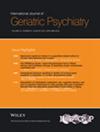Associations Between Sleep Duration Trajectories and Depressive Symptoms Among Middle-Aged and Older Adults: Findings From a Nationally Representative Survey
Abstract
Objectives
The relationship between sleep duration and depressive symptoms remains controversial in middle-aged and older adults. The aim of this study is to investigate the relationship of sleep duration trajectories with depressive symptoms and conduct further exploration through network analysis.
Methods
Based on the five waves of data on 8681 middle-aged and older adults from 2011 to 2020 in the China Health and Retirement Longitudinal Study database, group-based trajectory modeling was employed to depict their sleep trajectories. Binary logistic regression and network analysis were conducted to assess the relationship between sleep trajectories and depressive symptoms. Subgroup analysis was performed based on age (< 60, ≥ 60 years).
Results
The study identified three nighttime sleep duration trajectories, three daytime nap duration trajectories, and nine combined trajectories. People with initially low or moderate then decreasing nighttime sleep duration trajectory were more likely to have depressive symptoms compared with those with persistently recommended trajectory. And people with the combination of initially low then decreasing nighttime sleep and initially moderate or low then increasing daytime nap duration trajectories and the combination of initially moderate then decreasing nighttime sleep and initially high then increasing daytime nap duration trajectories were prone to have depressive symptoms compared with the combination of persistently recommended nighttime sleep and initially moderate then increasing daytime nap duration trajectories. The association between sleep trajectories and depressive symptoms may be modified by age groups (< 60 vs. ≥ 60 years). In network analyses, “felt depressed” was the most central item, and there were structural differences across different sleep duration trajectory networks.
Conclusions
Taking naps could offset the risk of depressive symptoms for people who lacked sleep at night. Developing different intervention strategies based on different sleep trajectories might help alleviate the onset of depressive symptoms.

 求助内容:
求助内容: 应助结果提醒方式:
应助结果提醒方式:


